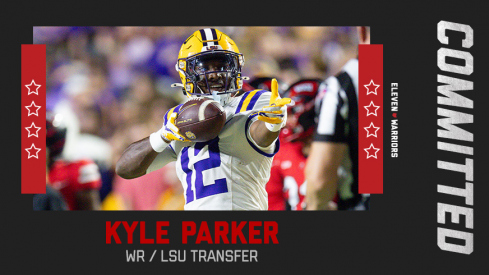
On January 3rd, Ohio State and Clemson will face each other in the 2014 Orange Bowl.
The game itself has a lot to offer fans of both programs, as well as college football fans in general. Both Ohio State and Clemson are double-digit win programs in 2013. Both have exciting offenses led two of the elite quarterbacks in the entire country. The last time both teams played each other, Ohio State's legendary coach slugged a Clemson linebacker for grabbing the game-sealing interception. He was fired for it. Both fan bases have already had fun in recalling the incident, albeit at the expense of statues on their respective campuses.
For college football fans, the 2014 Orange Bowl is unique in another way. For two conferences with the most visible inter-conference basketball challenge, both conferences infrequently, arguably rarely, interact on the gridiron. This is certainly true for bowl games. For the most part, bowl games between higher profile programs from each conference happen by either accident or serendipity.
Two such encounters were relatively recent. In the 2011 season, the Michigan Wolverines and Virginia Tech Hokies met in the 2012 Sugar Bowl. However, this bowl game might have been questionable on paper. Neither were conference champions in 2011. Virginia Tech was bombed twice by Clemson by a combined 53 points, but secured the ACC's first ever at-large selection to the BCS. Michigan didn't even make the conference championship game, securing an at-large nod to the Sugar Bowl largely on the heels of its name and its surprising turnaround under Brady Hoke, then in his first year. However silly a selection on paper, the game was quite interesting. Michigan won in overtime, 23-20.
Another prominent encounter was the 2006 Orange Bowl, though even this matchup was serendipitous. The 2005 season was the last season before the BCS National Championship Game became its own bowl game. Penn State, having secured the Big Ten's automatic BCS bid because of its head-to-head win against Ohio State that same season, was not going to play in the Rose Bowl that year because that game was hosting the national championship. Florida State, the ACC champion, had the Orange Bowl conference tie-in.
Gerrymandering a head-to-head coaching matchup between two of the oldest (if not the oldest) coaches in college football, the Orange Bowl pit Joe Paterno vs. Bobby Bowden. The game itself was rather ugly for those that like offensive fireworks, but still interesting. Penn State won 26-23 in three overtimes. However, even this game may have been marred by how Florida State limped into this contest, losing three straight games before defeating Virginia Tech in the first ACC Championship Game that year.
 Clemson had no problem crushing Illinois in 1991.
Clemson had no problem crushing Illinois in 1991.That's roughly it for games of importance. It's been decades since either Ohio State or Clemson played a team from the ACC or Big Ten, respectively, in a bowl game.
For Ohio State, the last encounter was one that fans from the 1990s would like to forget. Ohio State was chosen by the Sugar Bowl to lock horns with the Florida State Seminoles, the team of the decade, to end the 1997 season. It went poorly. What happened to Joe Germaine in that contest could be described as criminal battery. Ohio State lost 31-14. That 17-point deficit belies how lopsided the affair really was.
Clemson's last encounter with the Big Ten dates back even further. Clemson was coached by Ken Hatfield in the 1991 Hall of Fame Bowl to conclude his first season in Clemson, replacing the departed Danny Ford. He played an 8-3 Illinois Fighting Illini team coached by John Mackovic. Clemson won handily by a final score of 30-0.
Why aren't there more? Why don't the ACC and Big Ten play each other more? One quick answer is that they have, and I have ignored those games to this point.
Until 2009, the ACC and Big Ten shared a bowl tie-in: the Champs Sports Bowl (now: Russell Athletic Bowl). However, these games included enthralling matchups like Maryland vs. Purdue (2006) and Boston College vs. a 7-win Michigan State team (2007). The arrangement lasted just four years.
Perhaps the bowl committee realized that an ACC vs. Big Ten bowl matchup isn't going to elicit any excitement if it involves an 8-win Purdue team playing an 8-win Maryland team. When we draw attention to the 2006 Orange Bowl and the 2012 Sugar Bowl and the upcoming game between Ohio State and Clemson, reference to the former Champs Sports Bowl is precisely what we do not have in mind.
Another answer is more regional in focus. College football itself is regional in focus. Both the ACC and the Big Ten have a common focal point: the SEC. Beyond the time-honored tradition with the Rose Bowl, the Big Ten is married to the SEC more than fans of the conference would like to admit.
Presently, the Big Ten has three bowl tie-ins with the SEC. They are all signature games on January 1, outside the Rose Bowl. The number of bowl games between the Big Ten and SEC can climb to four if there is a BCS game involving the two. There routinely has been, albeit Ohio State fans would not like to dwell on most of these contests. Though the Big Ten also has three current bowl tie-ins with the Big XII, they are all lesser bowl games that do not grab much attention (e.g. Buffalo Wild Wings, Meineke Car Care Bowl, Heart of Dallas).
The same is true for the ACC. The ACC's signature bowl game may not even be the Orange Bowl. The Orange Bowl has disappointed in the last couple years with its proclivity to be a bowl of last resort for programs like Cincinnati, Kansas, Northern Illinois, and Wake Forest. Rather the ACC's signature bowl game might be the Chick-fil-A (hereafter: Peach) Bowl.
The Peach Bowl does not get enough praise for how great an atmosphere it is. It's basically college football's New Year's Eve party. It's the last televised bowl game of the calendar year and typically pits the no. 2 ACC team vs. the no. 2 (sometimes no. 3 if there's an issue with the Capital One Bowl) SEC team.
Using just the example of Clemson, the SEC has mostly been the object of their ire. Five of their last nine bowl games have been against SEC teams, whether in the Peach Bowl or Music City Bowl.
From this perspective, the opportunity cost of forgoing possible bowl games like Penn State vs. Clemson, or Michigan vs. Florida State, in lieu of SEC overload in the Music City Bowl or Gator Bowl is rather large.
The good news is that this is changing effective next year. In fact, the 2014 Orange Bowl might be a preview of what is to come in future Orange Bowls.
Starting in 2014, the Orange Bowl will still be the landing spot for the ACC champion, provided the ACC champion is not participating in the college football playoff. The ACC champion would be playing the next highest rated team from the Big Ten, SEC, or Notre Dame, provided that team is not playing in the Rose Bowl (B1G), Sugar Bowl (SEC), or college football playoff.
This arrangement is complicated by additional factors, such as quasi-ACC Notre Dame being barred from playing in the Orange Bowl more than two times in a 12-year span. Big Ten and SEC teams are guaranteed to appear three times in that same 12-year span. In short, we may be receiving more marquee ACC-B1G football games in the near future.
In addition, the ACC and Big Ten are reviving the spirit of the former Champs Sports Bowl arrangement from 2006 to 2009. Thanks in large part to conference realignment, the Pinstripe Bowl is dropping the Big XII in favor of the Big Ten. Now that Rutgers is in the Big Ten, the Pinstripe Bowl could not pass up the prospects of having it, or, well, Purdue, in this game.
Further, the Music City Bowl is dropping the SEC in favor of the Big Ten. This much is a little surprising. The bowl game is in Nashville, one of three traditional "hot spots" for SEC football (including Atlanta and New Orleans). However, the Big Ten had a bowl tie-in with the Music City Bowl in the early 2000s. This is not new for the conference, though playing an ACC team in this game will be new.
Starting in 2014, these games will tentatively be between the nos. 5-7 Big Ten Teams and nos. 3-6 ACC teams.
Perhaps these two bowl games are not what fans may have had in mind when thinking of the 2006 Orange Bowl or 2012 Sugar Bowl. Given the future of the Orange Bowl, these games may complement what could become something akin to an ACC-B1G Bowl Challenge.
In short, the 2014 Orange Bowl may be more than an at-large bowl between two double-digit win teams from the ACC and the Big Ten. It may serve as a preview of the trajectory of both conferences entering the era of the college football playoff. Though both conferences have done little with each other in a meaningful way in college football, both will be interacting with each other more going forward.

